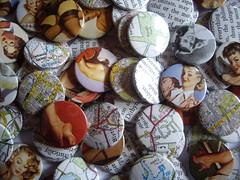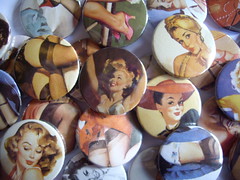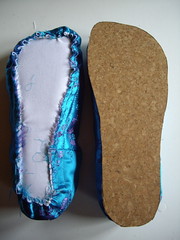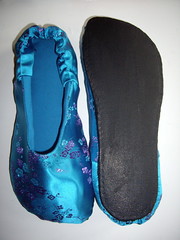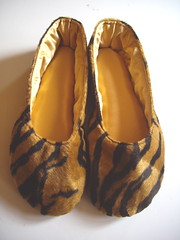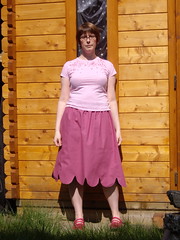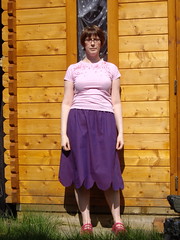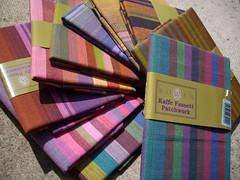Today I’ve been making slippers for Daniel, my colleague’s smallest son.
I’ve been following the instructions from Kwik Sew pattern 3323.
The Kwik Sew pieces are simple ovals, which can be worn on either foot, so I drew out my own pattern pieces to make them the same shape as Daniel’s feet. I then assembled all the pieces in the right order, and things seemed to be going pretty well!
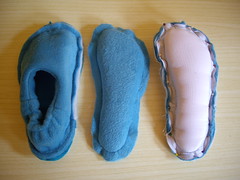
On the left is one completed upper, and in the middle its matching sole. The upper is two layers of fleece, with a layer of batting in between. The sole is made from 1″ foam, sandwiched between a layer of fleece and a layer of drill. On the right is what happens when you pin the upper and sole together, right sides in. The idea is that you sew most of the way around the edges, leaving a gap at the heel to turn the slippers through.
Admittedly I did use slightly thicker foam than called for in the pattern, and I had been thinking that maybe the layer of batting was a bit superfluous with the fleece. I could see that the sole/upper piece was quite thick, even after I’d trimmed the seam allowances off the foam. I was expecting this part of the sewing to be a little tricky…
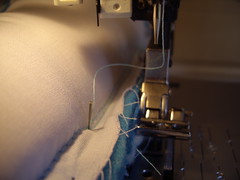
…and I was right. Oops.
The needle’s not only snapped, it’s also curved! This is apparently what happens when you try to squash six layers of fabric, plus an inch of foam, through your average domestic sewing machine. I don’t recommend it!
Next time I think I’m going to leave out the batting layer, and I definitely need to use only ½″ foam if I want to go with this particular construction method!
For this pair, I’m going to do a bit of unpicking, and then use the method where the final outer layer of the sole is sewn on by hand. Sometimes a bit of good old-fashioned hand sewing is the best way after all.
Like this:
Like Loading...





